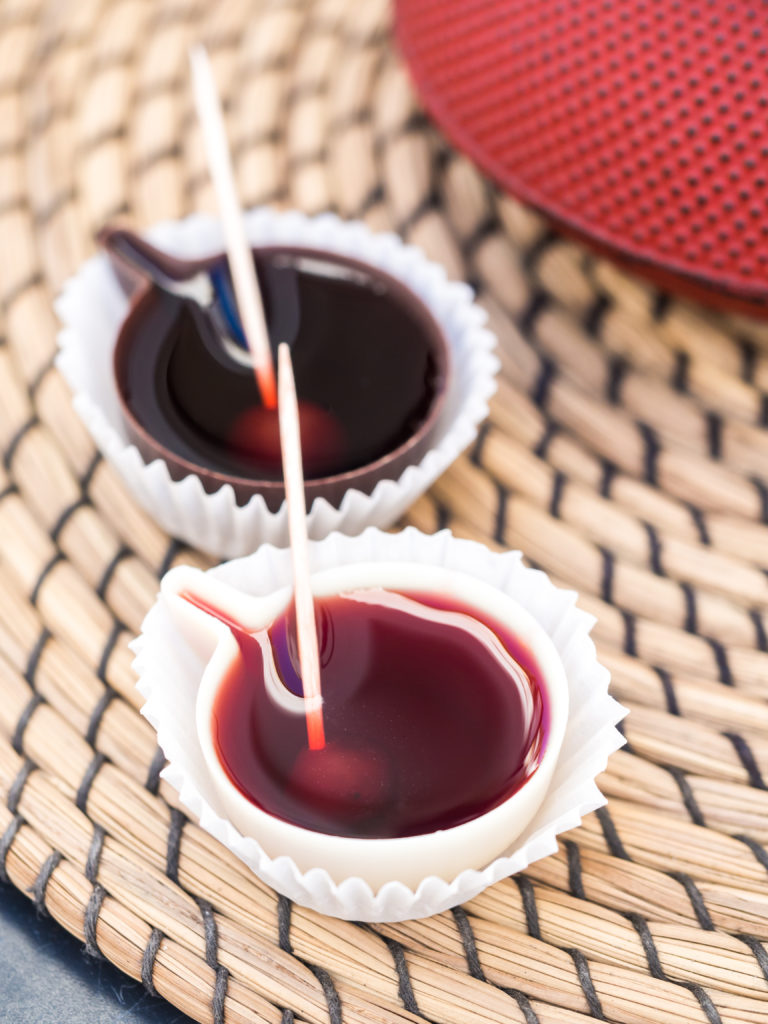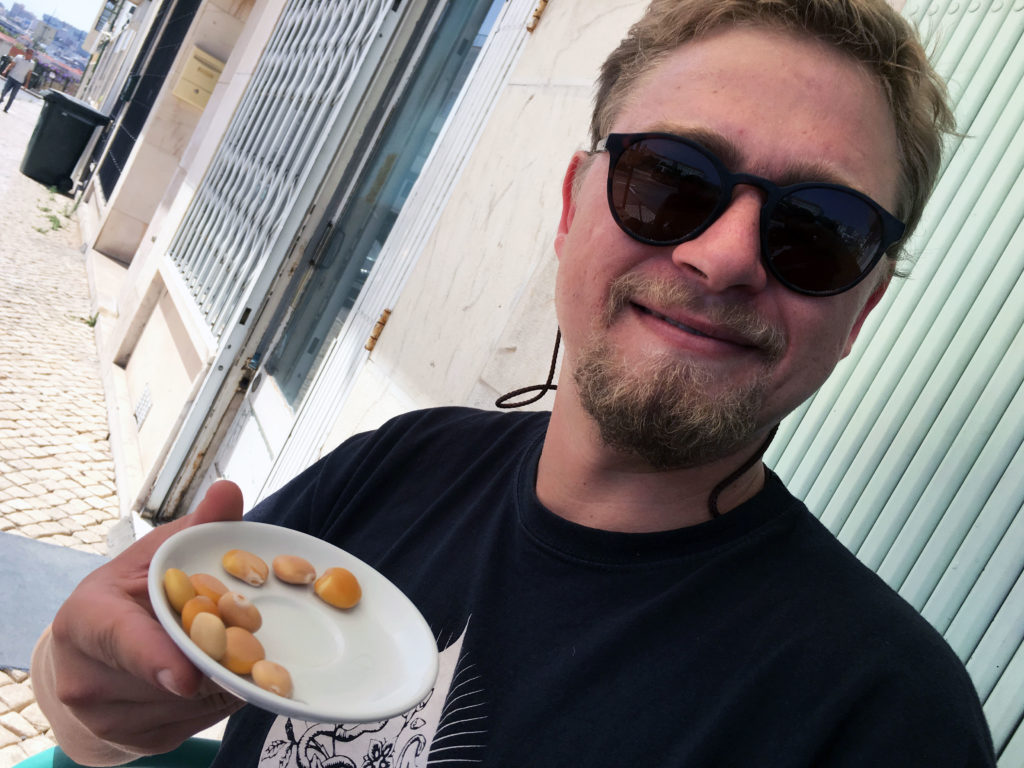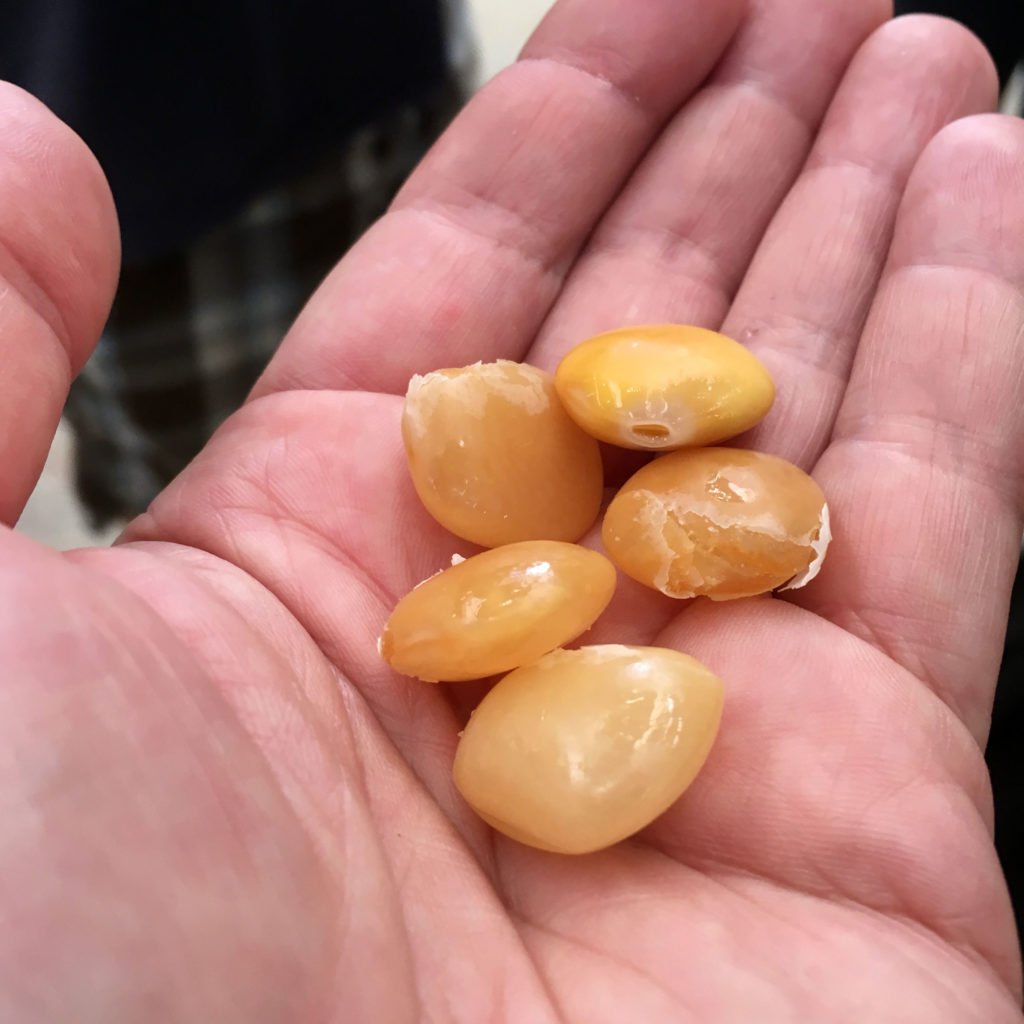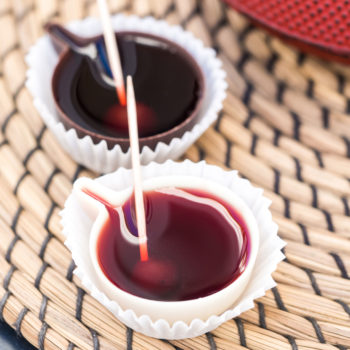While on vacation this summer, Rico spent a few days in the Portuguese city of Lisbon — or as they call it, “Lisboa.” And to make sure everyone on the staff didn’t totally resent his good fortune, he decided to do a little work while he was there.
He met up with Martim Vaz Da Silva, a guide with the food tour company Culinary Backstreets — and he taught Rico about Portuguese drinking culture. Tough assignment, but someone had to do it.
Interview Highlights
What is “ginjinha”?
Martim Vas Da Silva: Well, ginjinha, it’s a typical drink that originated in Lisboa, and it’s a sour cherry liquor.
…Normally it’s more a drink that you drink in the middle of the day. For example, after lunch, or mainly after getting out of work, so: relaxing with a friend.
How do you drink it?
Rico Gagliano: And it looks like it’s just a straight shot. Do you ever have this on ice or anything?
Martim Vas Da Silva: No. On ice? No. But it should be served chilled. That’s very important. And you shouldn’t shoot it. You should enjoy it; little sips. And it’s not too strong, but it’s not weak as well. It has 23 percent alcohol and lots of sugar, so it’s a pleasant drink.
Ginjinha taste test

Rico Gagliano: OK, here we go [takes a sip]. Ah, it’s good. Sweeter than I thought. I don’t know why I didn’t think it was going to be sweet because it’s a super dark red liquor. It’s something like… almost like a port.
Martim Vas Da Silva: It is very, very sweet. This is basically just lots of sour cherries — and the sour cherries are very sour as the name indicates — and so they put in lots of sugar and firewater. Firewater, it’s the Portuguese grappa. We call it Bagaço.
Rico Gagliano: And grappa, as I recall, like, after you press grapes to make wine, then you press them some more, and then you’re kind of down to the twigs. You distill those down, and it’s like the strongest liquor that you get out of the grape.
Martim Vas Da Silva: Yeah, yeah, it is. Grappa is quite strong. It’s normally between 40 and 50 percent alcohol, so… that’s a lot!
Rico Gagliano: So you kinda, you water it down a little bit for this drink.
Martim Vas Da Silva: Yes. And we are drinking the first ginjinha ever, that was founded in the early 1800s. The brand is called Espinheira.
On Portuguese bar snacks
Rico Gagliano: And also we’ve got a plate here of what I’m told is the kind of typical Portuguese bar food. What is this?
Martim Vas Da Silva: This is called tremoços. Basically, this is a bean, lupin bean… A lima bean or a fava bean more or less. It’s a cousin of those. And here normally we boil them, and then we put it in a brine with lots of salt.

Rico Gagliano: They have a skin on them. Can I eat them skin and all?
Martim Vas Da Silva: No, you have to peel it. So, first you bite to break the peeling, and then you squeeze it out. Watch out not to hit your face!
Rico Gagliano: So, basically, you bite the tip of the bean, and then… you squeeze it because you’re trying to squeeze the meat out of the skin. But just now you squeezed it so hard that the bean shot out!
Martim Vas Da Silva: Yeah, sometimes it shoots and hits your friends at the table.
Rico Gagliano: [Squeezes it out.] I got it in my mouth, kind of in the corner. [Chews on the tremoços] Oh, it’s really good. And it’s very nice, actually, the salt after the sweet drink. Do you normally drink this with ginjinha? Or beer, I can imagine it being good with.
Martim Vas Da Silva: Yeah, mostly with beer… If you go to a bar or esplanade here in Portugal in the summertime, they always bring this with the beer. It’s good for the bars and the restaurants, because you keep continuing to drink more beers.

On how Portuguese cuisine influenced Japanese cuisine
Martim Vas Da Silva: In the 16th century, the Portuguese were the first Western civilization to get to Japan. And the Jesuit priests that were there, one of the things they introduced there [in Japan] was the light batter that nowadays the Japanese use to cook their tempura. Our word in Portuguese for “seasoning” is “tempero.”
[This interview has been edited and condensed.]


